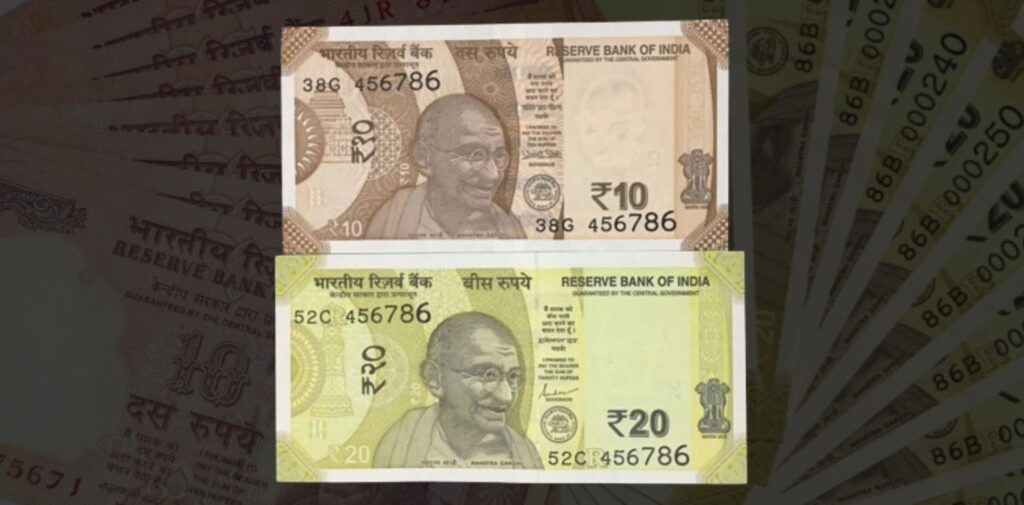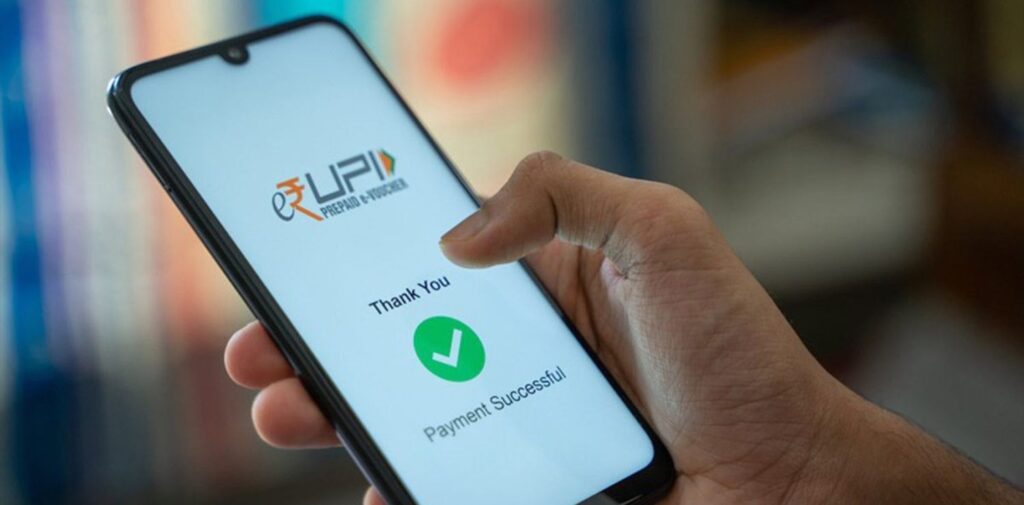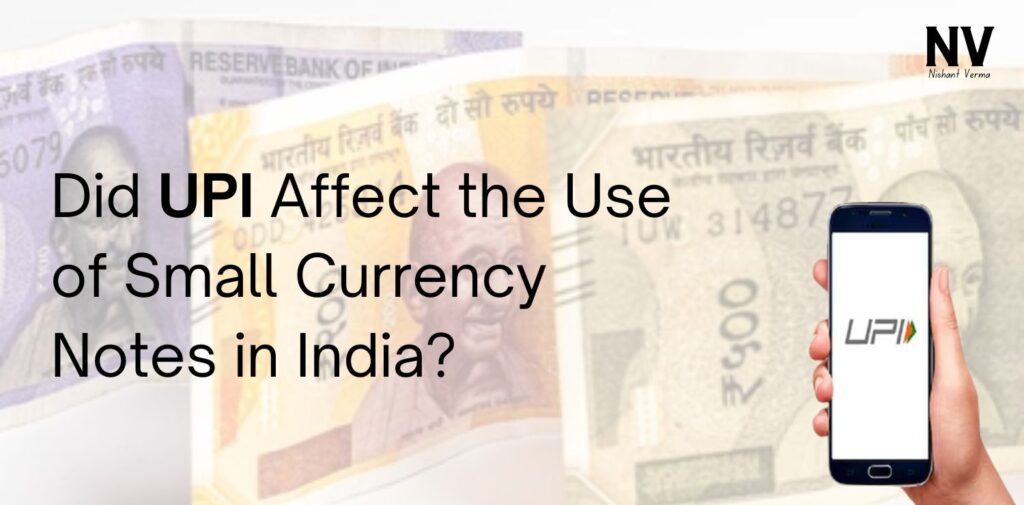Shortage of Rs 10-Rs 20 Notes: A Trouble for Poor People Affecting Millions of Citizens.
In recent years, India has experienced a noticeable shortage of Rs 10 and Rs 20 currency notes, particularly in rural areas and among economically weaker sections. This shortage has raised significant concerns, as these small denominations are crucial for daily transactions. MP Manickam Tagore has been vocal about this issue, stating that the lack of small currency notes is affecting millions of citizens, particularly the poor.
At the same time, the rise of digital payments, particularly Unified Payments Interface (UPI), has transformed how people in India conduct transactions. The growing popularity of UPI has brought about many conveniences, but it also raises the question: Has UPI affected the use of small currency notes like Rs 10 and Rs 20 in India? This article will explore the current shortage of small currency notes, its impact on people, and how the rise of UPI is changing the financial landscape.
The Importance of Rs 10 and Rs 20 Notes in India
For a large section of the Indian population, especially those living in rural areas or from lower-income backgrounds, Rs 10 and Rs 20 notes are essential for daily life. These small denominations are used for purchasing basic necessities such as food, transport, and other essentials. People rely on these notes for everyday transactions at local markets, street vendors, and small shops.
For millions of people who earn daily wages, the Rs 10 and Rs 20 notes play a crucial role in managing their finances. They often deal in small amounts of cash and rely on these notes to conduct most of their financial transactions.

Challenges Posed by the Shortage of Rs 10 and Rs 20 Notes
The shortage of Rs 10 and Rs 20 notes has created a number of challenges, especially for the poor. Some of the key problems include:
Difficulty in Everyday Transactions: For people living in rural areas or in informal sectors where most transactions are done in cash, the lack of small denomination notes makes it harder to pay for goods and services. For example, paying for vegetables, bus fare, or small grocery items becomes difficult when people don’t have Rs 10 or Rs 20 notes on hand.
Change Shortages: Small shops and local vendors often struggle to provide change for higher denomination notes like Rs 100 or Rs 500, which disrupts their business. Customers may need to buy more than they intended just to get the right change, or they may be forced to wait until the vendor collects enough smaller notes.
Impact on Daily Wagers: Many daily wage workers are paid in cash, and the shortage of small notes can affect their ability to receive their full payment. Employers may find it difficult to pay workers in the exact amounts required, which leads to delays or incomplete payments.
Financial Exclusion: Many people who are not yet part of the formal banking system or those without access to digital payment methods are left with fewer options for managing their finances. These individuals are heavily dependent on cash transactions, and the lack of small notes worsens their financial struggles.
UPI and the Digital Payment Revolution in India
While the shortage of Rs 10 and Rs 20 notes has created challenges, India has also seen a rapid increase in the adoption of digital payments. The Unified Payments Interface (UPI), launched by the National Payments Corporation of India (NPCI), has been one of the most transformative innovations in the country’s financial sector.
UPI allows users to transfer money instantly between bank accounts using their smartphones, without needing physical cash. This system has become extremely popular due to its ease of use, convenience, and the fact that it does not require a point-of-sale (POS) terminal like traditional card payments.

The Rise of UPI in India
The adoption of UPI has grown exponentially in India. According to recent data, UPI transactions reached over 10 billion in a single month in 2023, showing how deeply embedded this payment system has become in Indian society. From small kirana stores to large retail chains, UPI is widely accepted as a mode of payment, and it is even used for peer-to-peer transfers.
Some of the reasons for the rapid growth of UPI include:
- Convenience: UPI allows users to make payments or transfer money instantly with just a few taps on their smartphone. This has made it a preferred option for many people, including small business owners and local vendors.
- No Need for Change: UPI eliminates the need for carrying or providing change, which is especially useful in situations where small denomination notes like Rs 10 and Rs 20 are in short supply.
- Government Push for Digital Payments: The Indian government has actively encouraged the adoption of digital payments, especially after the demonetization in 2016, which led to a temporary cash shortage. Initiatives like Digital India and the promotion of fintech have further accelerated the shift towards cashless transactions.
Did UPI Affect the Use of Small Currency Notes?
While UPI has undoubtedly made financial transactions more convenient for many, it has also played a role in reducing the demand for small currency notes like Rs 10 and Rs 20. Here’s how:
Shift to Cashless Payments: As more people start using UPI, especially for smaller transactions, the need for Rs 10 and Rs 20 notes has decreased in some areas. For example, people can now pay for a cup of tea, a rickshaw ride, or a pack of biscuits using UPI, without needing to carry cash.
Convenience for Small Vendors: UPI has provided a practical solution for small vendors who may struggle to give change for larger denominations. By accepting digital payments, they no longer need to worry about maintaining a supply of Rs 10 or Rs 20 notes to serve customers.

Greater Access to Financial Services: UPI has also brought millions of unbanked and underbanked individuals into the formal financial system. Even those who may not have access to small currency notes can make digital payments using their mobile phones. This has been particularly beneficial in urban areas, where the penetration of smartphones is higher.
Impact on Rural Areas: However, in rural areas, where internet access and smartphone penetration are still limited, the reliance on cash remains high. In these regions, the shortage of Rs 10 and Rs 20 notes is felt more acutely, as digital payment options like UPI are not as widely used.
The Role of the Government and RBI
The shortage of Rs 10 and Rs 20 notes has not gone unnoticed. Both the Reserve Bank of India (RBI) and the central government have taken steps to address the issue, such as increasing the printing of small denomination notes and encouraging digital transactions. However, the balance between cash and digital payments is still evolving.
Conclusion: Balancing Cash and Digital Payments
The shortage of Rs 10 and Rs 20 notes has created significant challenges for millions of Indians, particularly the poor and those in rural areas. While the rise of UPI and digital payments has offered a convenient alternative to cash, it has not entirely replaced the need for small currency notes. For many people, especially those in cash-dependent sectors, small notes remain essential for their daily transactions.
As India continues to embrace digital payments, it is important to ensure that the transition does not leave behind those who rely on cash. The government and financial institutions must work together to ensure that both cash and digital payment options are available and accessible to all citizens, regardless of their economic background or location.
The growth of UPI has undoubtedly impacted the use of small currency notes, but for now, Rs 10 and Rs 20 notes are still a crucial part of India’s economy. The goal should be to strike a balance between promoting digital transactions and ensuring the availability of small currency notes for those who need them the most.




